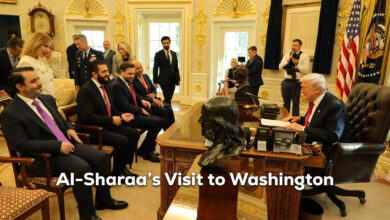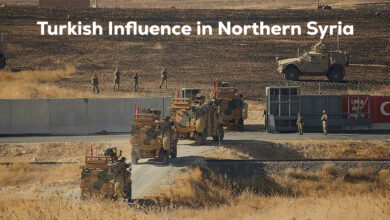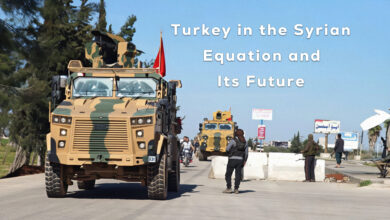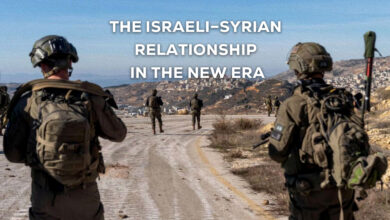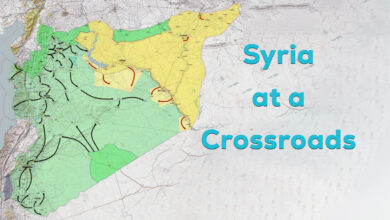
In Syria, the activities of the states involved in the Middle East are increasing every time. It seems that the victorious states in Syria including Russia, the US, Turkey and Iran will achieve a large part of the victory in the Middle East through their advisors and soldiers who are on Syrian soil. They also have military posts and conduct military patrols that show the extent of their military influence.
The outbreak of the Russian-Ukrainian war resulted in an increase in the pace of proving the existence of those states in Syria, especially Turkey, which used the world’s preoccupation with the war and announced its intention to launch a military operation in northern Syria and occupy other parts of the region. This was clear in light of conflicting alliances and interests, and the abundance of many cards that Ankara can use as means of pressure, especially on the US and Russia.
By its announcement, Turkey believed that it would not face difficulties in obtaining approvals, especially in light of the EU’s preoccupation with the war in Ukraine and the existing conflict between the US and Russia. It believed that Syria would not be a priority to the two conflicting states and that satisfying Turkey is more important, but the reality was shocking to Turkey, and it turned out that it was fishing in troubled waters, after both the American and the Russian rejection.
Syrian government threatened a military response to “any Turkish aggression on Syrian territory.” The rapprochement between the Syrian Democratic Forces (SDF) and the Syrian government on the ground in preparation for a draft coordination to confront the potential Turkish invasion or even to sign permanent understandings in the face of external danger makes Turkey the most loser from its announcement of the potential operation. As for Iran, it also threatened to intervene militarily if an attack occurs, especially in an area close to its influence, including Tel Rifaat, because it is in the vicinity of the two Shiite towns of Nubl and al-Zahraa in the northern countryside of Aleppo.
On June 8, Turkish Minister of Foreign Affairs Mevlut Cavusoglu received his Russian counterpart, Sergey Lavrov to discuss Turkey’s preparations for the potential military operation. It seems that Russia has what it requires in return for giving Turkey approval to occupy other parts of the Syrian lands, and that the Turks and the Russians seem to agree on all the outcomes and inputs of the war in Ukraine, where Turkey provides support by facilitating the passage of Ukrainian grain shipments seized by Russia through Turkish territorial waters.
However, the difference and conflict of interests between Russia and Turkey in Syria is also clear. Russia seizes a part of Syrian geography in exchange for any area being occupied by Turkey. Recently, the areas under the control of the Turkish occupation which witnessed fighting between armed factions proved Turkey’s failure to control them and prompted it to think of handing the area to the terrorists of Hayat Tahrir al-Sham (HTS, formerly al-Nusra Front) which have already taken control of military positions of the mercenaries of the Syrian National Army (SNA). This leads us to the fact that there may be a deal including handing over Idlib and Afrin to the HTS in exchange for Russia to turn a blind eye to the Turkish threats, or to reach a deal so that Russia gives the green light to Turkey to launch its occupation operation, in addition to continuing to ignore the violations Turkey commits through drone attacks on the Syrian borders. Then, the Syrian army and Shiite militias carry out a military operation led by Russian warplanes to eliminate all the areas seized by the HTS, and thus, Russia appears to confront terrorism while providing moral and military support to the position of the Syrian government, which suffers from popular pressure in its areas in light of the repercussions of the economic crisis.
In this context, it is useful to increase coordination between the Autonomous Administration of North and East Syria (AANES) and the Syrian government, which has shown a weak position so far in light of the continuous Turkish threats, which come within the framework of dividing Syria by cutting off parts of it, tampering with its sovereignty as it did before, removing outstanding obstacles, and protecting the Syrian people from other waves of displacement. It also has to launch a popular campaign demanding the US clarify its position and reaction in the event Turkey carries out its military operation.
What actually appears from Turkey’s insistence on escalating its rhetoric and repeating its threat each time is to increase pressure on the actors, especially Iran, which expressed its real and clear rejection of the military operation, while the American and Russian positions remained closer to reservation and did not rise to the level of deterrent rejection. However, the results of the eruption of this operation (if it happens) will not be the same as the ones that preceded it, due to the quantitative and qualitative level of the military capabilities and diplomatic flexibility of the SDF. Here we will see that the announcement of the military operation will be accompanied by advanced stages of rapprochement between the Syrian government and the AANES with Russian support, and unexpected losses that the Turks will suffer from.
In fact, the zero hour that they promise will be determined by the Turks, but they will not be able to stop this war, because Turkey has set its objectives and the geographical map of its occupation operation, but it is expected that this war will go beyond the planned map, in addition to the popular awareness that prompted the people to decide to resist and stay in their homes. This is confirmed by the residents of Tel Tamr, Manbij, and Tel Rifaat.
Until now, Turkey is proceeding with its project and making every effort to carry out demographic change in line with its policies, and to try to abort the project of the democratic nation.
Rojava Center for Strategic Studies
